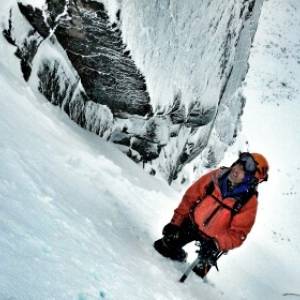Rhizocarpon geographicum
After yesterday's expansive beauty today we delve into the microscopic to find a moment of wonder.
Warning - this blip might wander into the arena of geek....
Identifying lichens is an exceptionally specialist field. For some only a chemical test or examination at extremely high magnification works, most definitive tests are destructive - and as we're about to find out - that's a real shame. Frankly if you get the right genus as a layperson you're well ahead of the curve. For most of my clients just knowing the type is good (Crustose, Foliose, Fruticose, Squamulose, Leprose, Filamemtose & combined) . But these are some of the key building blocks of life on our planet - they start the process of turning rock to soil, inhospitable to fertile. A symbiotic relationship older than any animal - nature proving that harmony and support are at the beginning of everything.
This shot shows several crustose lichens on a drystone wall. Whilst the stone is random and mixed I'd identify it as Rhyolite - both as I'd expect that in the location and as its silica rich which these lichens would seek out.
Now having said that its difficult to be specific - well one of these beauties is actually quite easy - the bright green of Rhizocarpon geographicum, matched to that distinctive black border of a visible prothallus, the tiny black apothecia - and the fact that its such an important species all combine to make it a superstar of the lichen world.
This lichen is one of the main touchstone species of lichenometry - the specialisation of using exposed lichen to age displaced rock - a key tool in the study of glaciers - but increasingly used in the dating of monuments and ancient buildings. As lichen can exist for up to 10,000 years they can provide a record of existence otherwise unavailable to us. As they also require exact conditions to thrive they provide a record of environmental conditions and changes. Lichenometry was first hypothesized in the early 1900's - but found acceptance in 1950 with the publishing of Beschel's study of glacial movement in the European Alps. To understand it complex maths is required - lichen do not grow regularly - they typically follow a parabolic curve best shown as a third order polynomial function. Whilst this is relatively uniform it is affected by climate and nutrient variables - so a difference can be expected, but allowed for, between samples from say Wales or Iceland. If you're still with me here its easiest to think in terms of an averaged growth rate of 0.5-0.75mm a year across the diameter - very very slow!
So next time you pause by a big rock or wander through a church yard - maybe you'll notice these ancient lifeforms - the very starting blocks of life. They deserve a little respect, they're older than us all - and really are beautiful when you get to know them.

Comments
Sign in or get an account to comment.


